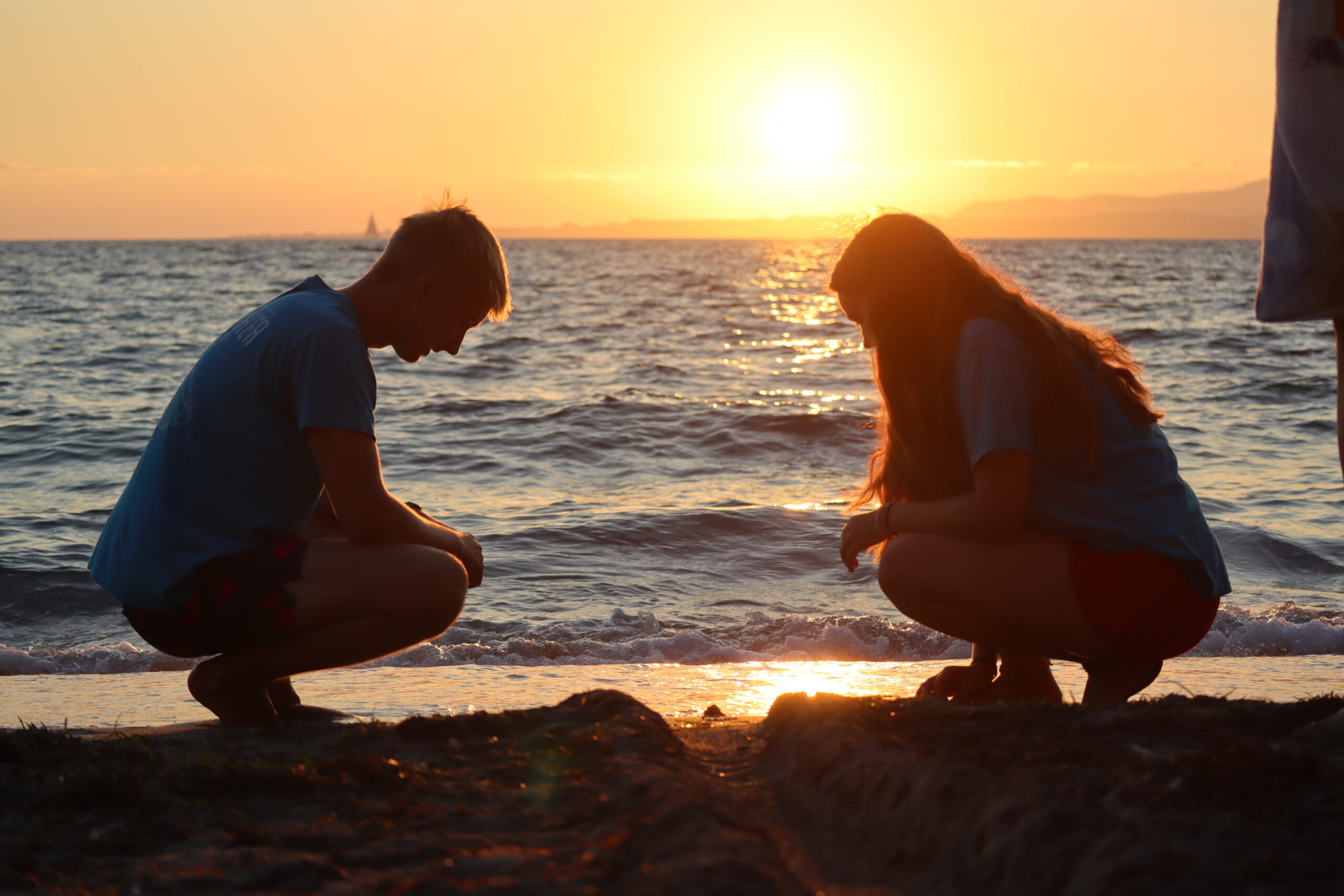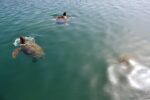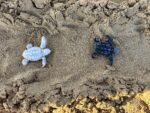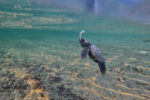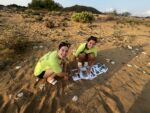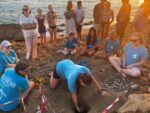Our Latest News- August 19, 2024
Svoronata Field Station
With another “Svoronata sunrise” see us welcome another group of eager volunteers.
This past week, we have been working hard to map the dunes on Megali Ammos, boshing out another record survey. Our very own “plant princess”, Niamh was able to identify our favourite plant, Pancratium maritimum (also known as the sea daffodil).
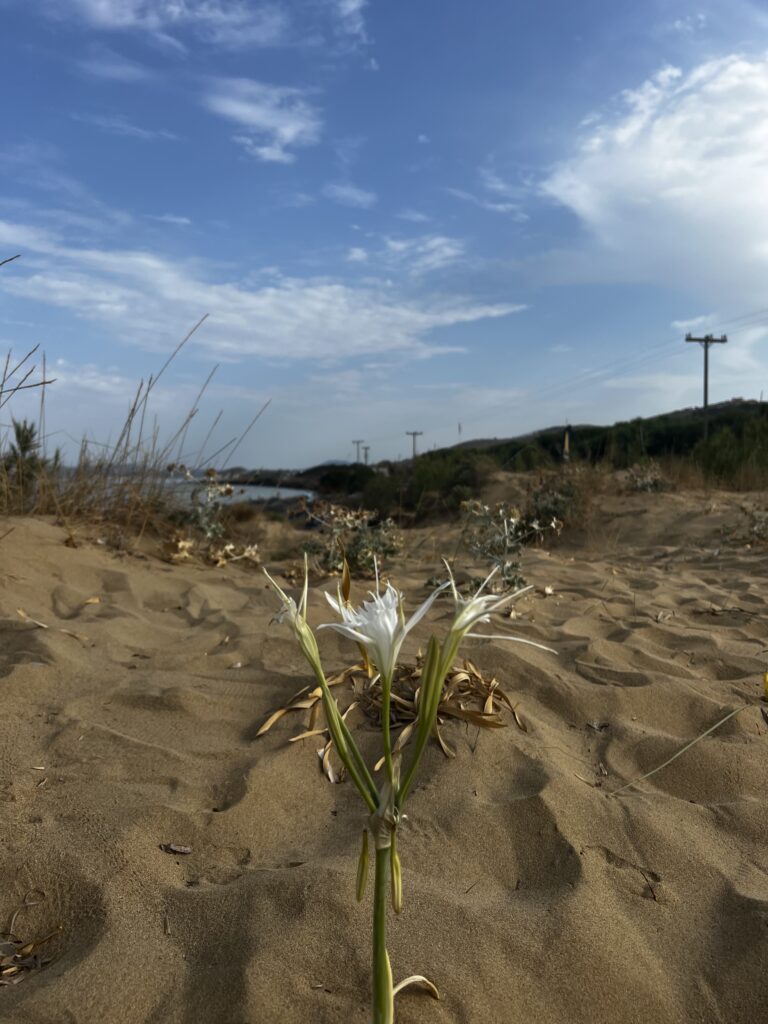
Our dynamic duo, Ryan and Jamie (AKA, “bird and bug man”), ventured once again to the Livadi Wetlands, spotting our bird of the week: a kingfisher! On this excursion, our beach clean baddies uncovered another “waste of the week”: BAKLAVA!
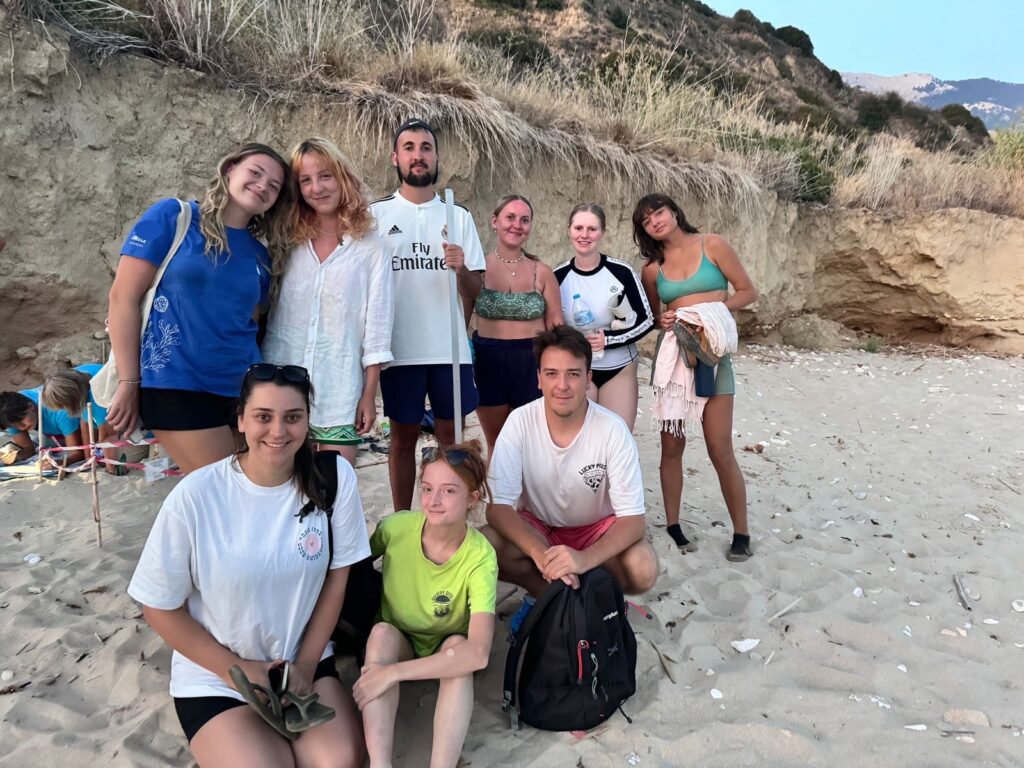
This week also saw the beginning of our light pollution shifts to ensure the hatchlings are able to make it safely to the brightest horizon. Our volunteers were given the fantastic opportunity to join a hatchling rescue shift,
Witnessing firsthand the importance of preventing light pollution on our beaches. Meg, our “hatchling hero”, confidently educated tourists during inventories of how our coastal surveys not only protect our ecosystem but only through that work are these hatchlings able to thrive.
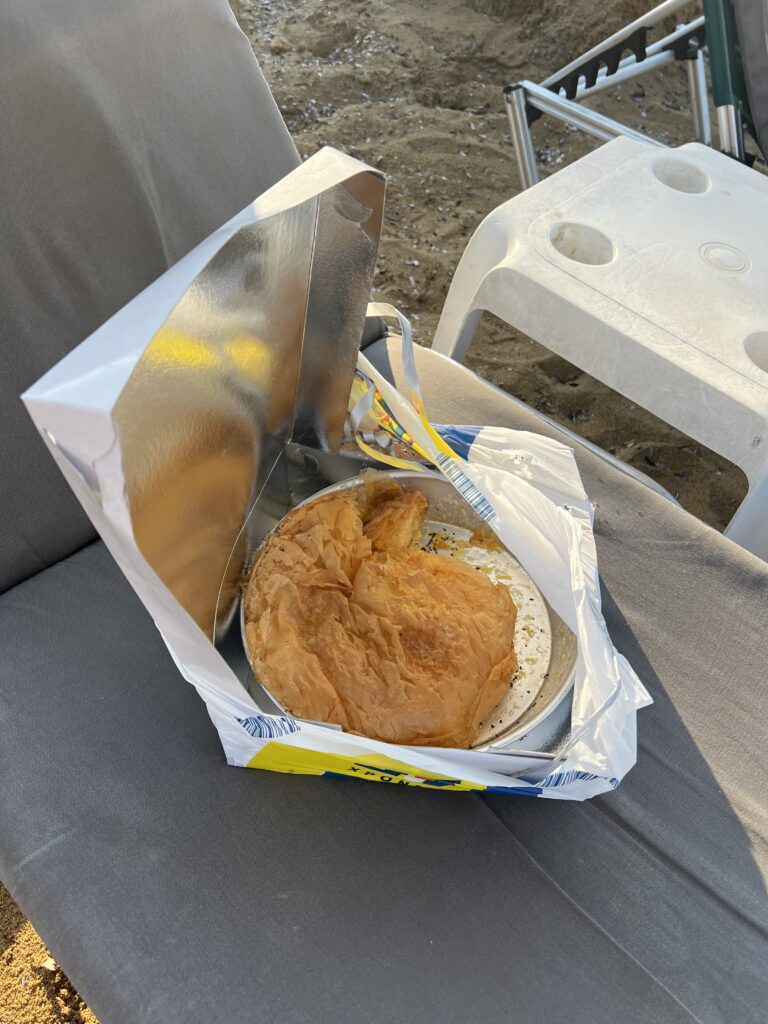
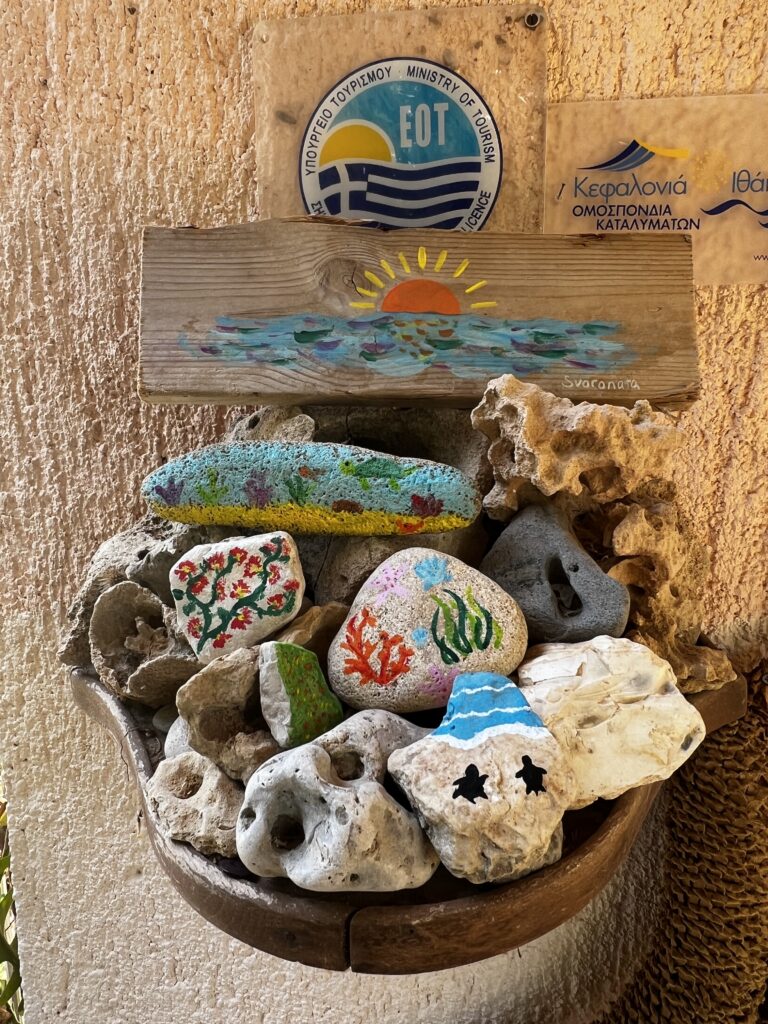
Our volunteers have loved our rock painting nights, adding to our lovely collection in our office.
The Education Program
The Education Program is buzzing with the new challenge of spotting hatchling tracks as well as adult female tracks as hatching season is now in full swing! Our groups have had the amazing opportunity of watching hatchlings get released to start their journey in the sea. We have in some cases been able to complete nest inventories on our morning surveys where our volunteers have helped with scribing, egg sorting and shading as we carefully but efficiently inventory our nests to assess their stages of development and success rate. In some cases, we have to rebury hatchlings as they are not yet ready to be released into the big blue sea. This can be because they still have a larger yolk sack attached to them that had not yet been fully absorbed or that they are just a slightly weaker or tired hatchling who would benefit from a little extra rest time in the sand. We check on these hatchlings the next morning to see whether they have taken themselves off to sea naturally or are still in the sand but ready to go or have sadly died.
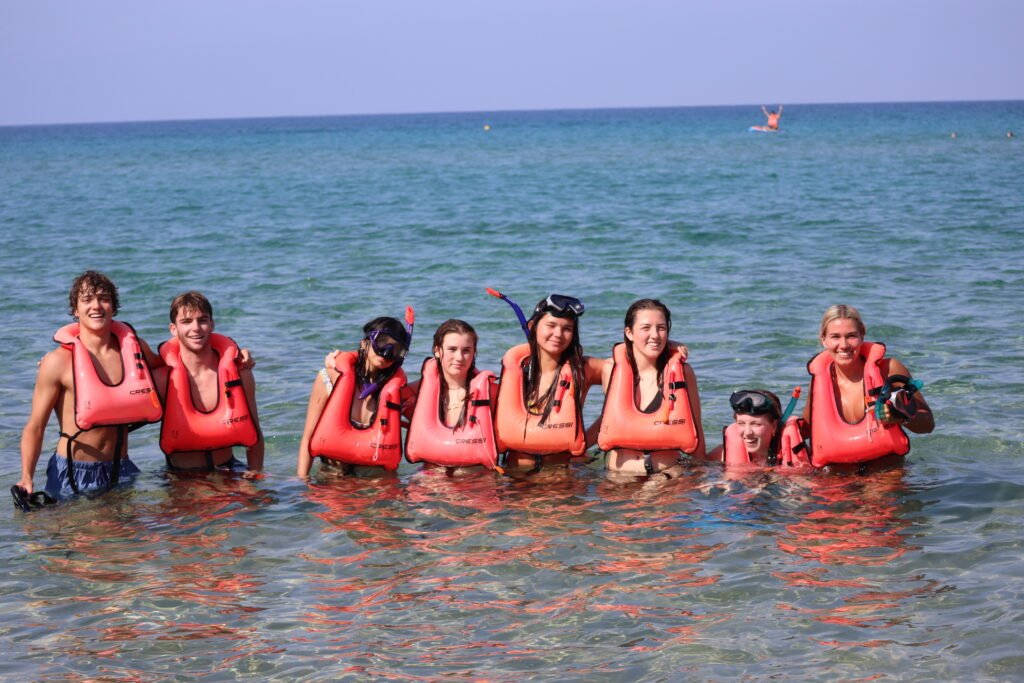
Our snorkel surveys are still going strong with some of our groups being fortunate enough to watch dolphins jumping out the water in front of them whilst conducting the survey. We have also had a few more visits from our resident monk seals who inquisitively swim past along with lots of starfish covering our rocks. We are continually mapping the Posidonia to monitor growth and changes and are lucky enough to have our amazing volunteers collecting lots of data.
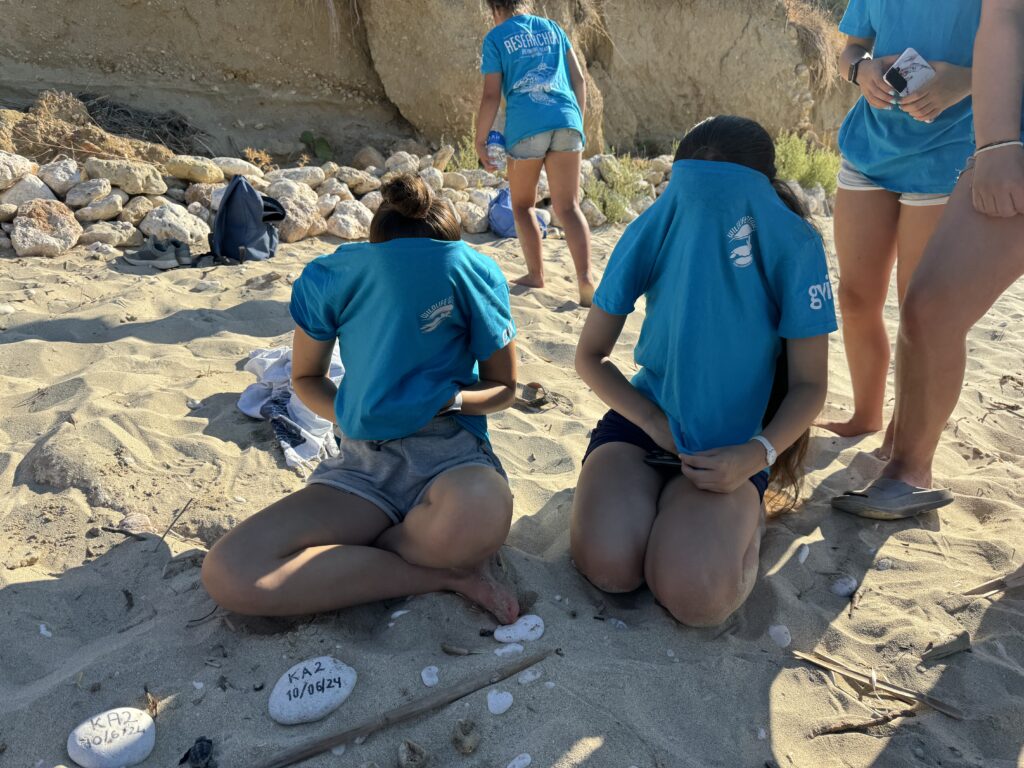
In Argostoli harbour this week, our students conscientiously observed and admired our resident loggerheads whilst collecting the foraging and interactions data. We had plenty of foraging data from our famous local turtle Barb, and educated lots of tourists about our sea turtles and the sea grass!
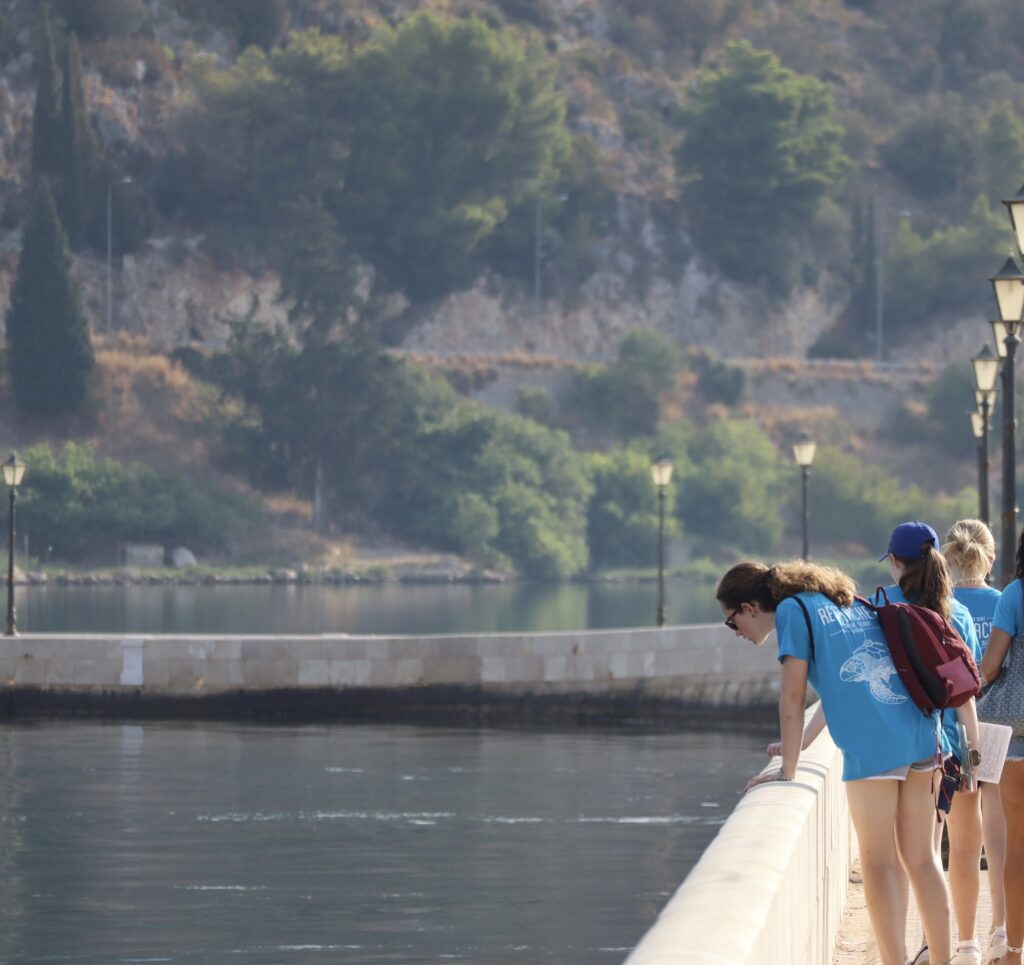
Argostoli Field Station
We are now in the midst of hatching season and have had over 1500 hatchlings from our nests so far! Our team are monitoring 103 nests across our beaches looking for hatchling tracks during morning surveys and 25 of these nests are at, or over, their 45-day incubation mark and will be hatching imminently. With hatching season arriving we have said goodbye to some of our nesting team who have worked incredibly hard finding and protecting nests since May. We have also welcomed some new members of our hatching team who will care for the nests through their final incubation stages and ensure the hatchlings make it to sea safely!
Amongst the excitement of hatching, we have additionally had 4 new nests in the past 2 weeks. One of these nests was a ‘found by hatching’ event where we discovered the nest as hatchlings emerged during a hatchling rescue shift. This nest had over 40 hatchlings hatch in one night. All our volunteers and team have been working tirelessly through all hours of the night on hatchling rescue shifts. Hatchlings follow the strongest light source to guide them to sea which would naturally be the moon but due to the levels of light pollution on many of our beaches, it makes it impossible for our hatchlings to make it safely to sea. Our Hatchling Rescue shifts monitor the nests expected to hatch throughout the night and take any hatchlings to a dark area of the beach where they can make their own way to sea.
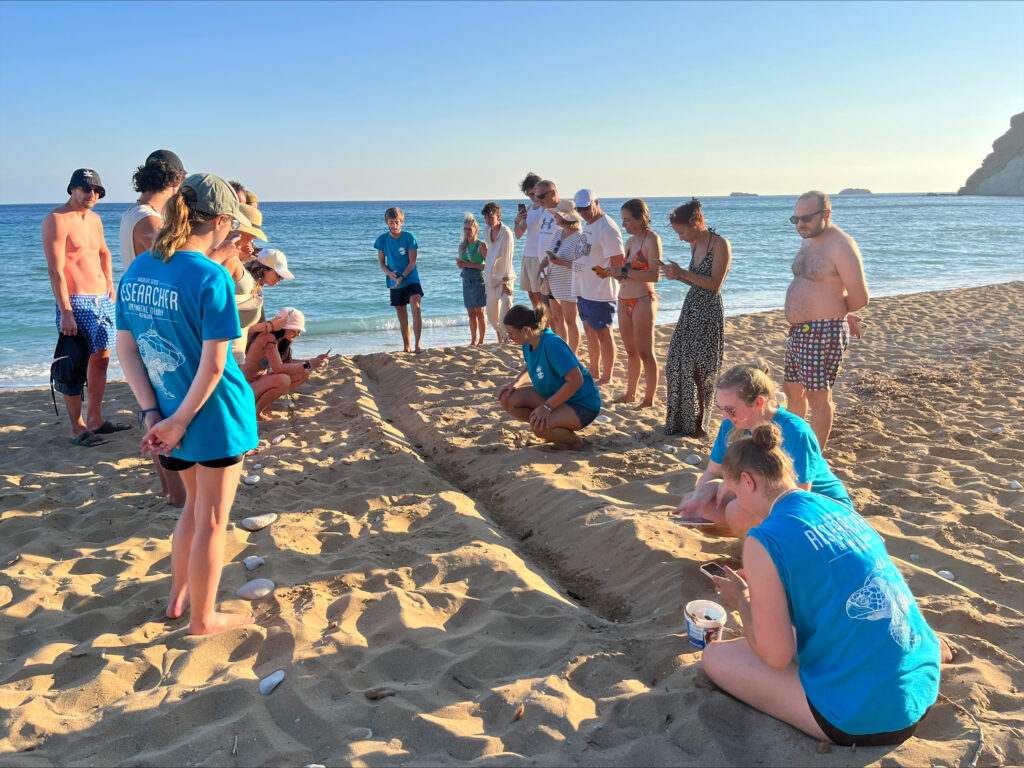
The team have carried out 35 full inventories so far! After a nest has been hatching for 3 days, we go into the nest to release any trapped hatchlings and to categorise the eggs within. We’ve been so happy to see so many people attend our public inventories! We have met so many people who are passionate about sea turtle conservation and have been pleased to answer any questions or just have a chat about turtles and the work we do! We want to thank you all for your support.
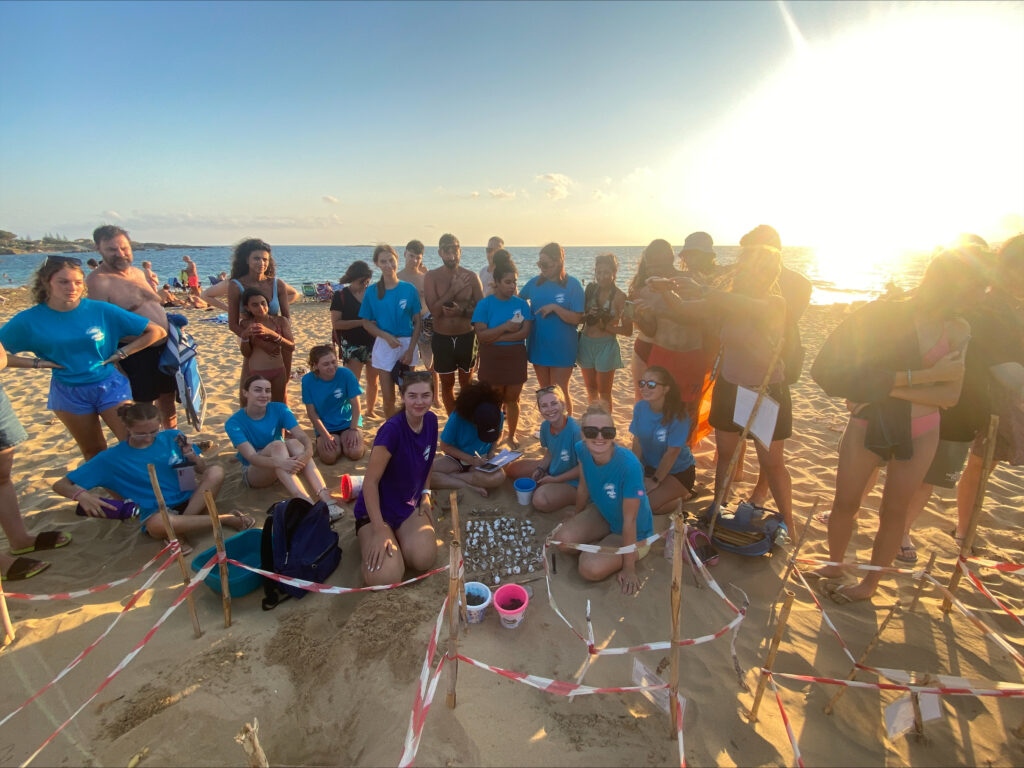
Lourdas Field Station
Since the 30th of July any new nests that have been laid have been relocated to Megali Ammos beach nearby the airport where we have a large hatchery in an even more ideal and safe location where our later nests will be more protected from storms that will increase as the season comes to a close. The elevation here is in some places more than 3 meters and the distance to sea is greater than 20 metres. These relocations require more planning as the eggs get driven in a cooler box to the new beach where our holes are pre-dug in order to cut down on the time the eggs are out of sand.
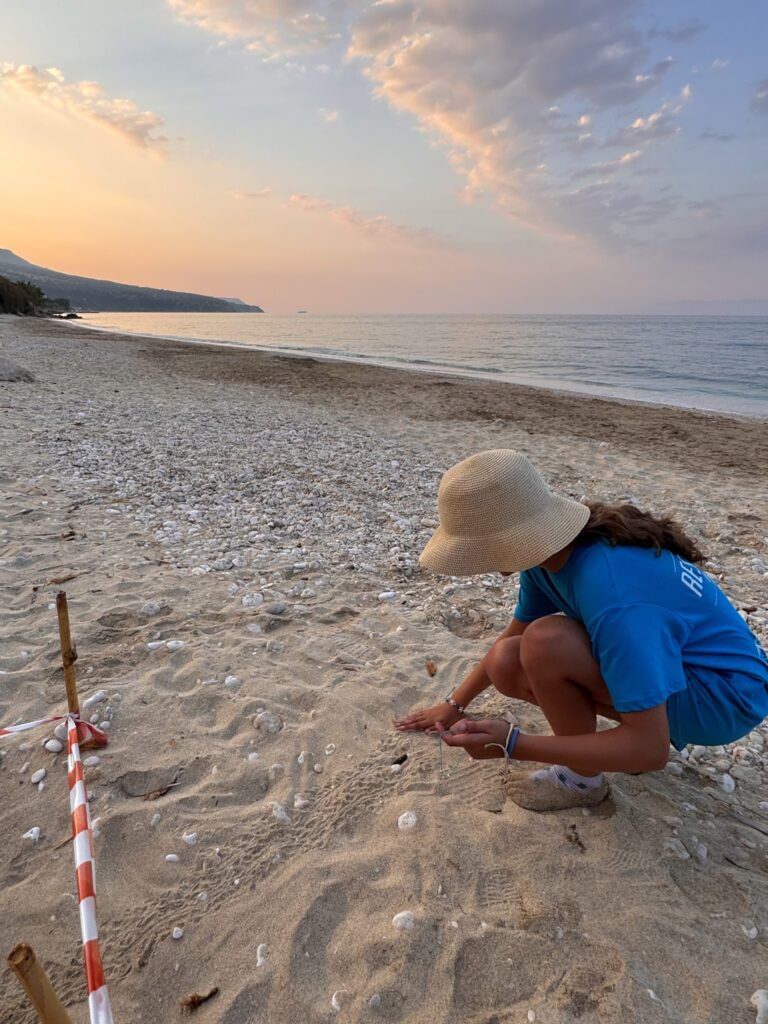
Hatching season is continuing on well in Lourdas Area, with 10 nests already fully inventoried and 180 hatchlings helped to sea! One nest relocated from Trapezaki to Kanali hatchery earlier in the season wasn’t giving the hatching tracks we expected and when it was inventoried it was found that most of the nest had hatched and we helped the remaining hatchlings to sea. The sand grain size is very large on this beach and mixed with rocks so hatchling tracks are not always apparent. We have also now recorded 2 FBH’s (Found By Hatchling nests) on lourdas beach, both of which were inventoried, with the first being completed on the day and the second having a few viable eggs remaining which have now been reburied in our Kanali hatchery!
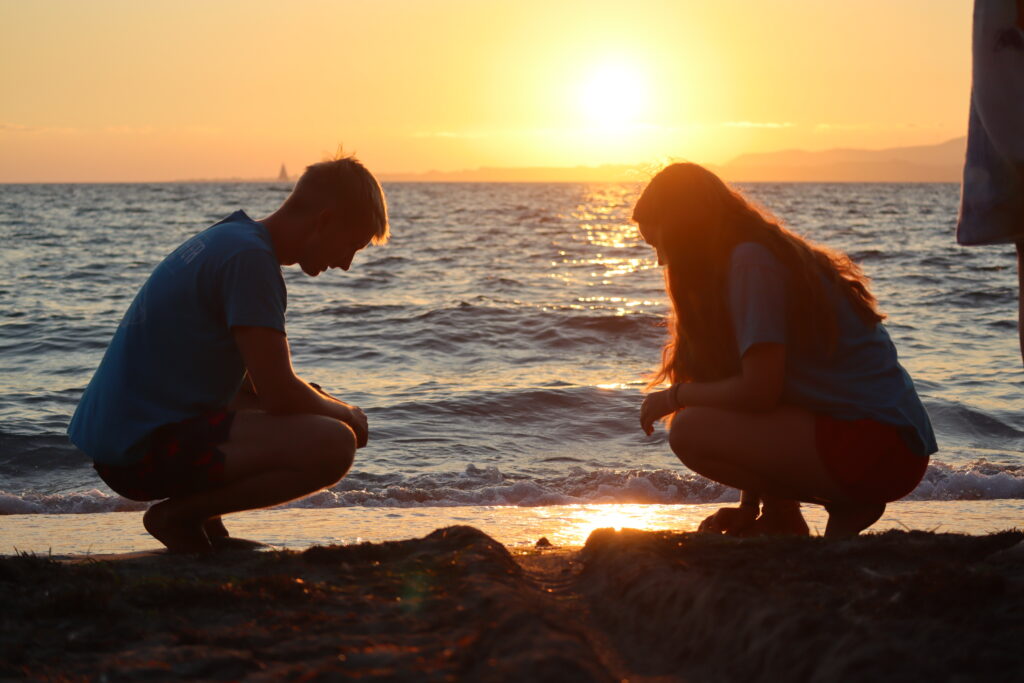
After a few days of no nesting tracks on this survey area, we discovered a track on Lourdas, whilst she didn’t nest, it suggests to us that she is trying. Our team is now currently wondering if we have another nest on the way….which would take our nest count from 74 to 75! We will now have a busy few weeks ahead of us with both morning and evening inventories, babies galore!
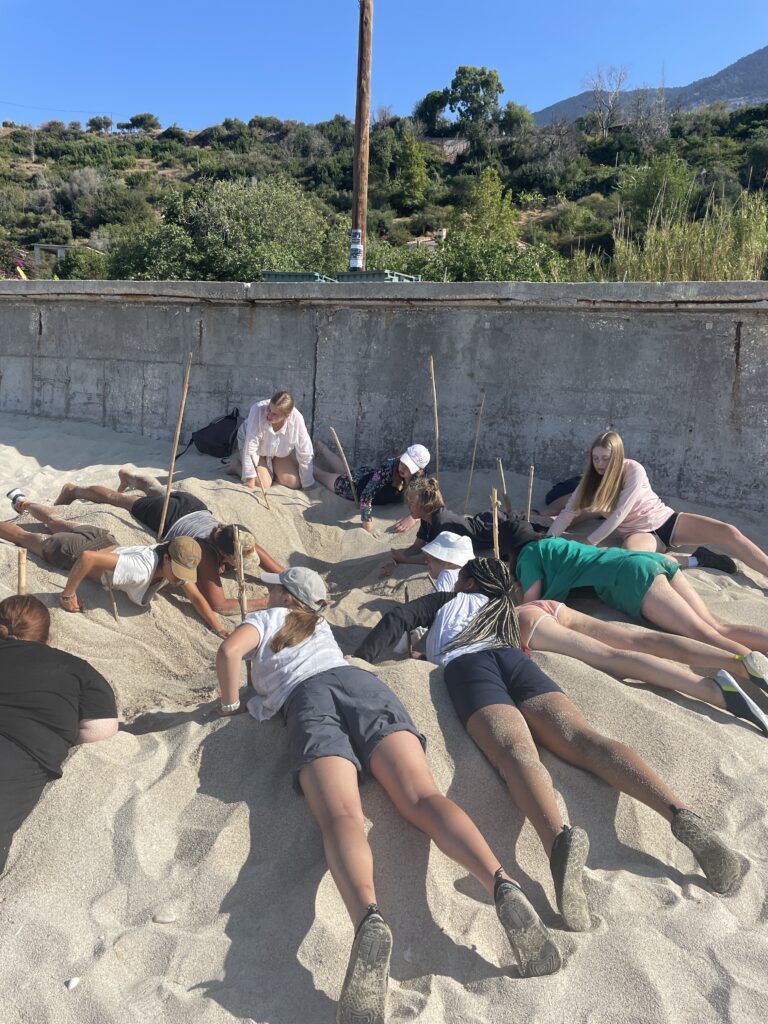
Skala Field Station
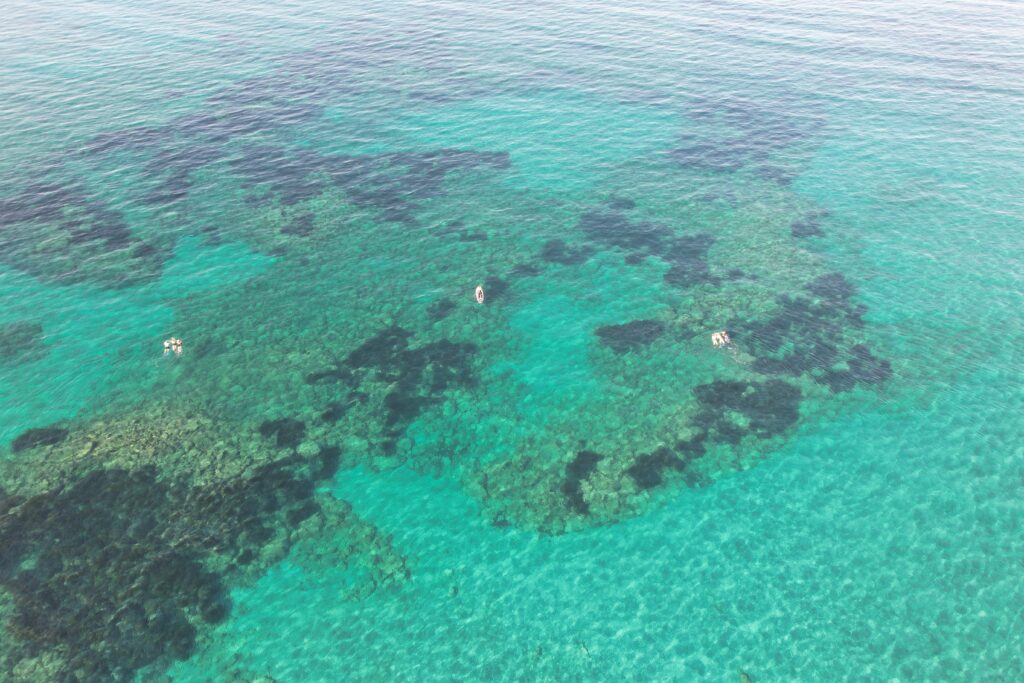
As we welcomed a new group last Thursday, we are now over halfway through the season in Skala. Our volunteers from the previous groups have already managed to complete more quadrats during the sand dune surveys than the total number of quadrats of last year during the whole season! The data that has been collected during those surveys has helped us identify new plant species, including Curio talinoides and Erigeron canadensis, also known as horseweed. This last plant was used by native Americans as a preparation with the plant’s leaves to treat sore throat and dysentery. The data they collected during their snorkel surveys contained the highest percentage of Posidonia so far this season. As always, sunset swim was a huge success, and everyone loved it. A lot of the volunteers used their day off to go on cruises and explore the island. The species pancratium maritimum has begun to flower, most of them have now beautiful white flowers at the top of the stem.
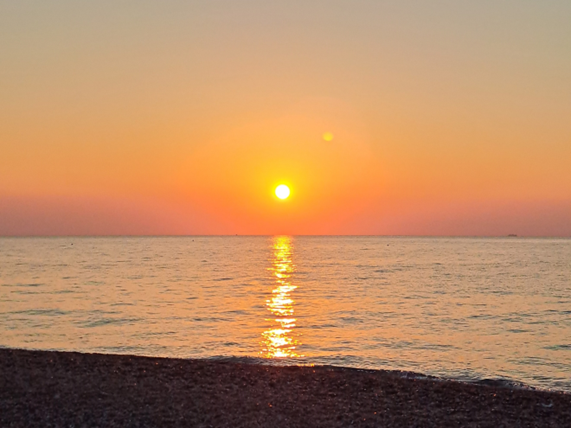
The new group had a successful training day, which they ended with a sunset swim, gyros and ice cream. Their first day of shift went great, and they are already making plans for their days off. One of our volunteers is particularly good at henna, which everyone has enjoyed in their free time. All of them are really excited about what the next two weeks hold.
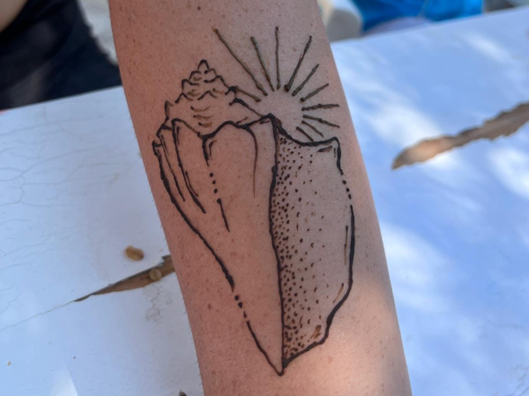
Lixouri Field Station
Hatching season is booming in Lixouri! As the nesting females have slowly stopped emerging to lay new nests, we have still been kept very busy. We have been finding hatchling tracks every day on our morning beach surveys and most evenings we are occupied with multiple inventories welcoming many hatchlings into the world! In the last two weeks, 42 nests have been inventoried and finished with 1,217 hatchlings helped to sea – in comparison, this time last year we had only inventoried and cleared under 10 nests!
Unfortunately, one of our cherished nesting females Birdy was found deceased on July 31. Birdy had laid two clutches on Megas Lakkos this season – one of which has now hatched and finished very successfully. Sadly, we don’t know what caused her death.
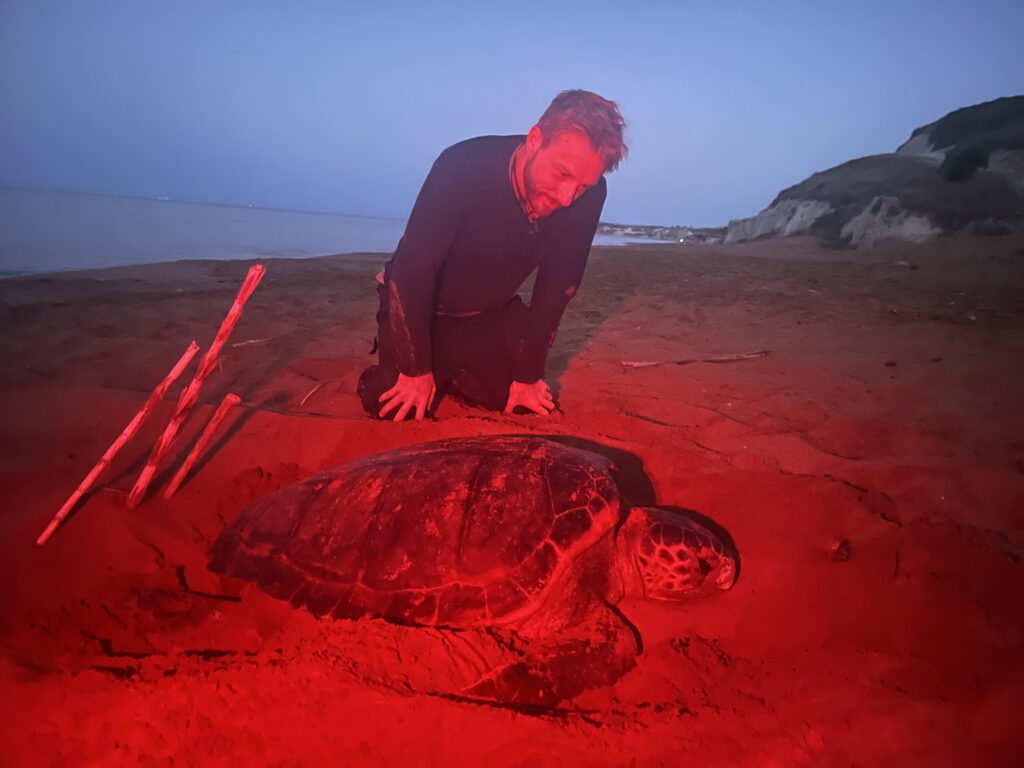
We also recently found a deceased juvenile – estimated to be around 3 years old – who had ingested a fishing line. Twenty-three centimetres of line had entered through the mouth, and 94cm had exited from the cloaca. A devastating reality to continuously see the effects of discarded fishing gear in our waters.
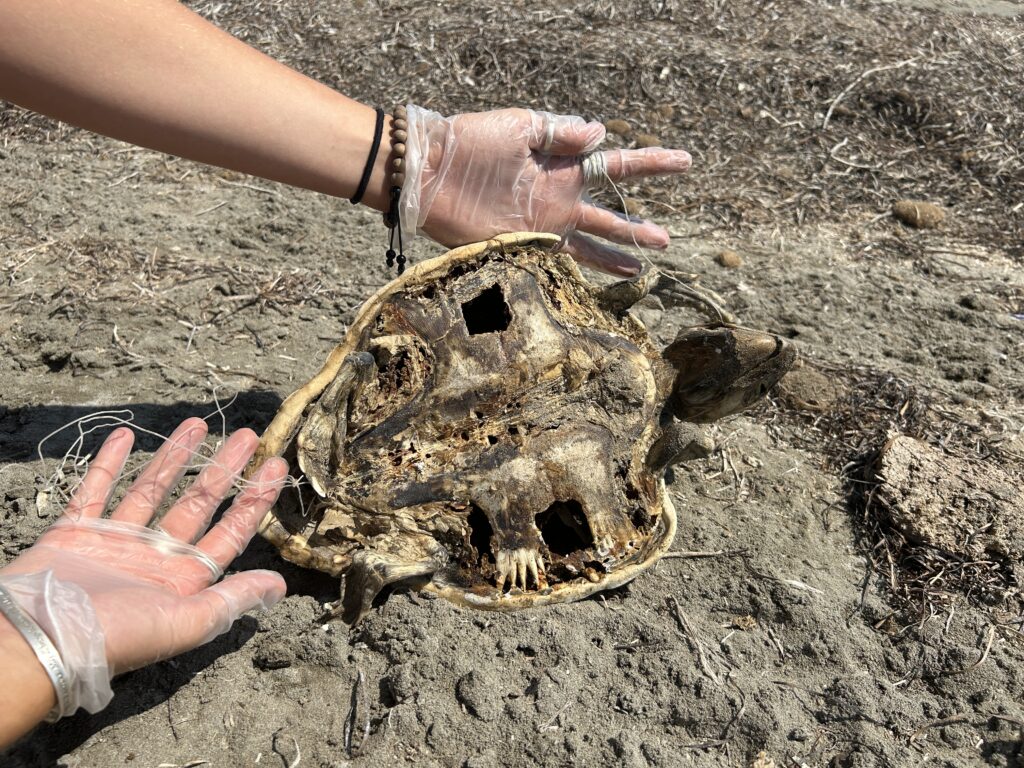
Our newest group of volunteers have been settling in well for their first week, partaking in group activities such as souvlaki night and henna night! They have thoroughly enjoyed their Morning Survey shifts and evening inventories, growing their knowledge and answering many questions from the public with ease!

